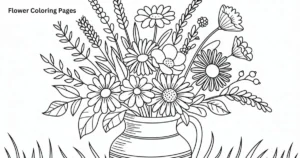Peonies are iconic flowering plants celebrated for their lush, voluminous blooms and timeless beauty. Native to Asia, Europe, and North America, these perennials thrive in temperate climates and have been cherished for centuries. Their large, fragrant flowers come in a range of colors, from soft pinks and whites to vibrant reds and corals, making them a favorite in gardens and floral arrangements. Beyond their visual appeal, peonies hold deep cultural and symbolic significance, often representing prosperity, romance, and good fortune.
The shape of a peony is one of its most defining features, contributing to its widespread admiration. From the tightly wrapped buds to the full, layered blooms, each stage of a peony’s growth offers a unique aesthetic. Their rounded, bushy forms create a sense of abundance and elegance, setting them apart from other flowers. Whether in a garden or a vase, the distinctive shape of a peony continues to captivate and inspire, making it a beloved symbol of natural beauty and grace.
Read More: What Is the Landscape Uses for a Peony?
General Shape of a Peony Flower
The general shape of a peony flower is often described as rounded, bushy, and full. Their blooms can range from 2 to 10 inches in diameter, creating a striking presence in any garden. The layered petals give them a dense, almost cloud-like appearance, which sets them apart from other flowers.
When compared to roses or dahlias, peonies have a softer, more voluminous look. While roses are known for their tightly packed petals and dahlias for their geometric precision, peonies exude a natural, effortless beauty that feels both delicate and abundant.
Types of Peony Flowers and Their Shapes
Single peonies feature a simple, open shape with fewer petals, often revealing their bright yellow stamens. These varieties have a wildflower-like charm, making them ideal for naturalistic garden designs.
Double peonies, on the other hand, are dense and ball-shaped, with layers upon layers of petals. Their full, luxurious appearance makes them a favorite for formal arrangements. Semi-double peonies strike a balance, offering a mix of petals and visible stamens, while Japanese and anemone peonies stand out with their unique central stamen clusters, adding a touch of whimsy.
Peony Bud Shape
Before blooming, peony buds are rounded, tapered, or oval, resembling small, tightly wrapped packages. These buds are often covered in a slight fuzz, adding to their charm. As they prepare to open, the buds swell and soften, hinting at the beauty within.
When the buds finally burst open, they reveal their full, layered petals, transforming into the iconic peony shape. This process is a visual delight, symbolizing renewal and the arrival of spring.
Influence of Peony Varieties on Shape
The shape of a peony varies significantly across its three main types: herbaceous, tree, and intersectional peonies. Herbaceous peonies are known for their classic, rounded blooms, while tree peonies often have larger, more open flowers with a slightly flatter appearance.
Intersectional peonies, a hybrid of the two, combine the best traits of both, resulting in unique, intricate shapes. Popular varieties like ‘Coral Charm’ and ‘Sarah Bernhardt’ showcase the diversity of peony shapes, from cup-like forms to fully double blooms.
Factors Affecting the Shape of a Peony
The shape of a peony is influenced by environmental conditions such as sunlight, soil quality, and climate. Adequate sunlight ensures robust growth, while well-drained soil helps maintain the flower’s structure.
Pruning and care practices also play a role. Proper pruning encourages fuller, healthier blooms, while neglect can lead to sparse, misshapen flowers. Additionally, genetic factors and hybridization determine the inherent shape of each variety, making some peonies naturally more compact or open than others.
Symbolism and Cultural Significance of Peony Shape
The shape of a peony contributes greatly to its symbolism. Their full, rounded blooms are often associated with prosperity and abundance, while their soft, layered petals evoke feelings of romance and compassion.
In art and literature, peonies are celebrated for their elegant forms, often depicted as symbols of beauty and grace. Their versatile shapes make them a popular choice in floral arrangements, where they can serve as both focal points and complementary elements.
Peony Shape in Floral Design
In floral design, the shape of a peony is highly valued for its versatility and impact. Their large, rounded blooms make them ideal for creating dramatic centerpieces and lush bouquets.
Peonies pair beautifully with other flowers, such as roses, ranunculus, and eucalyptus, thanks to their soft, textured appearance. Their ability to blend seamlessly with both bold and delicate shapes makes them a staple in wedding florals and seasonal arrangements.
Conclusion
The shape of a peony is a captivating blend of nature’s artistry and botanical diversity. From the soft, rounded buds to the full, layered blooms, each stage of a peony’s growth offers a unique visual delight. Whether it’s the simple elegance of single peonies or the luxurious density of double varieties, their shapes evoke a sense of abundance and beauty.
These flowers hold cultural significance, symbolizing prosperity, romance, and renewal. In gardens and floral arrangements, their versatile forms continue to inspire and enchant. Observing peonies reminds us to appreciate the intricate details and timeless elegance found in nature’s creations.
FAQs
What is the general shape of a peony flower?
Peonies typically have a rounded, bushy, and full shape with layered petals.
How do different types of peonies vary in shape?
Single peonies are simple and open, double peonies are dense and ball-shaped, and Japanese peonies have unique stamen clusters.
What does a peony bud look like before it blooms?
Peony buds are rounded, tapered, or oval and often slightly fuzzy before opening.
What factors influence the shape of a peony?
Environmental conditions, pruning practices, and genetic factors all affect a peony’s shape.
Why is the shape of a peony important in floral design?
Their large, rounded blooms make peonies ideal for creating dramatic and elegant floral arrangements.









